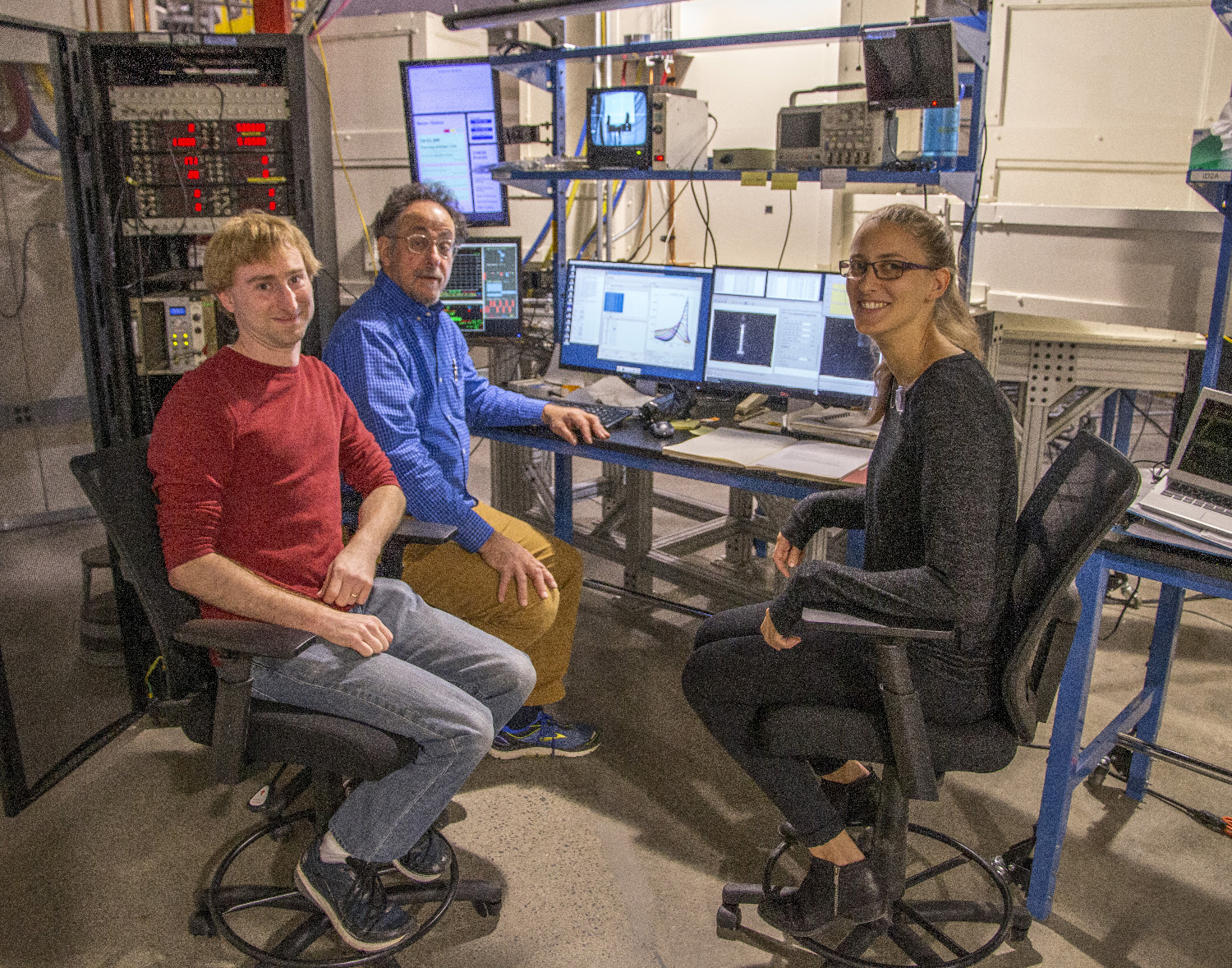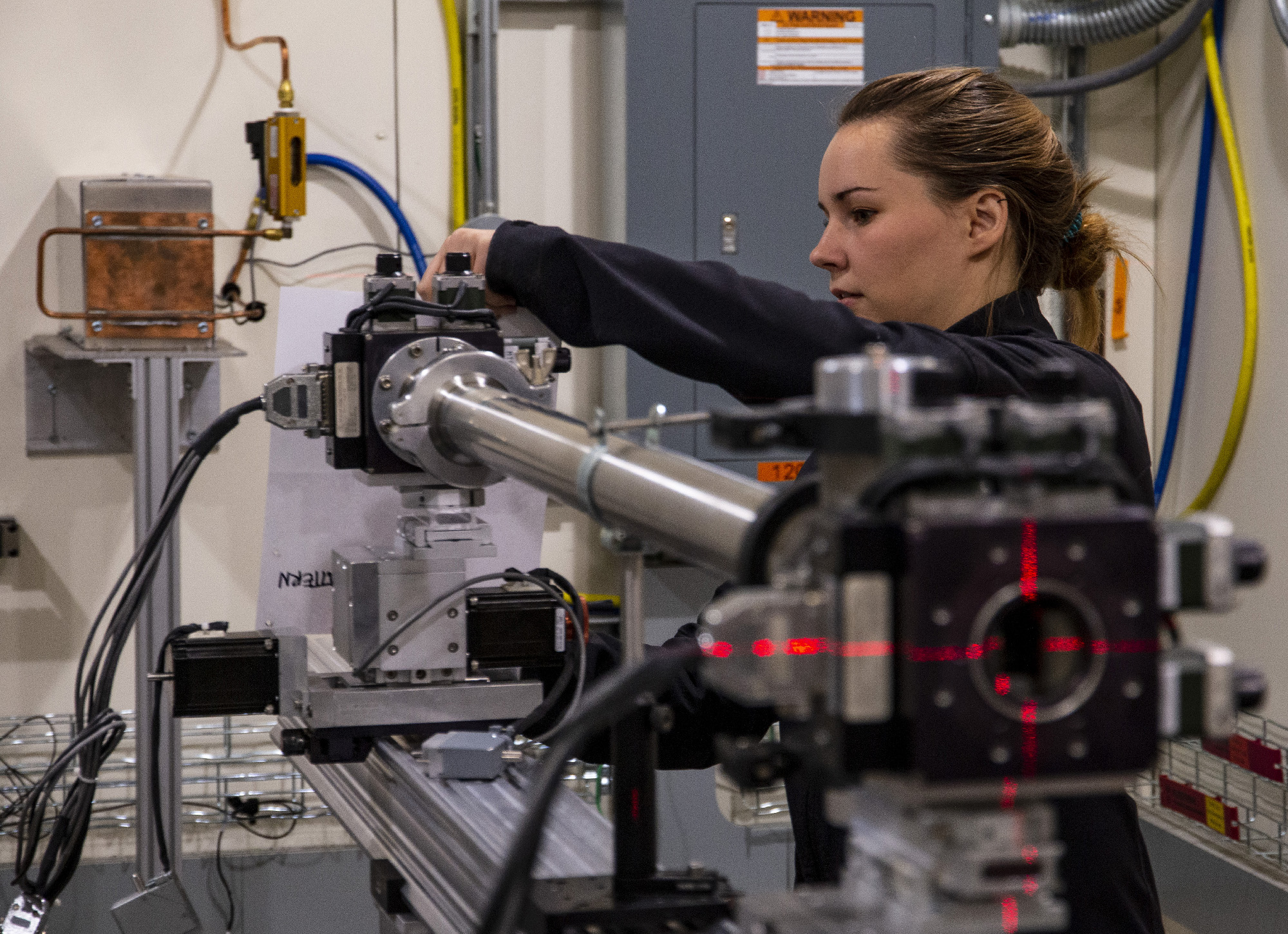Louise Debefve stands outside a hutch on the experimental floor of the Cornell High Energy Synchrotron Source, CHESS. She is preparing the experimental equipment for some of the first data to be collected at CHESS since the completion of the CHESS-U upgrade.
The platinum samples that she is about to study at the new beamlines will provide insights into the catalytic function of the element, enabling for example the generation of cleaner energy powering everything from cars to laptops.
But for now, Louise is happy to just be using the X-rays again, a familiar occurrence for the former graduate student, who spent years developing her research of catalysts through the use of X-rays at SSRL.
As a postdoc at CHESS, Louise initially found herself right in the middle of the feverish construction of the upgrade, with no X-rays available for research.
“The hutch was pretty much empty when I got here, maybe there was a table inside” she says, as she recalls her first experience at Wilson Lab in March of this year. “I now realize all the work that goes into setting up an experimental station, and tailoring it for specific research... I am excited to just be a user again,” she says with a laugh.

Louise explains that her first months at CHESS were spent assembling the critical components of the beamline, working with staff scientists to equip the hutch with instruments for emission spectroscopy; the principal technique used to study the valence electronic structure in catalytic systems such as platinum compounds. This proven technique also guides the station’s research focus; Photon-in Photon-Out X-ray Spectroscopy, or PIPOXS. The PIPOXS beamline is one of four the new NSF funded Center for High Energy X-ray Sciences, CHEXS, at CHESS.
This month marks the official start of user operation at CHESS and all three partner programs: The NSF funded CHEXS, as well as MacCHESS supported by NIH and NYSTAR, and the Materials Solutions Network at CHESS, or MSN-C, funded by the Air Force Research Lab (AFRL), all welcomed users to new hutches and beamlines.

The production of these brilliant X-rays at CHEXS, MacCHESS and MSN-C, is a result of the CHESS-U upgrade project funded by New York state. This project started with the removal of the CLEO detector in the summer of 2016, long before students like Louise were thinking about a postdoc position at CHESS.
The removal of CLEO marked the conversion of the lab’s decades-long particle detection program to a new era of X-ray production, underscored by eliminating one of the counterrotating beams needed for particle collisions.
The accelerator team is now able to focus solely on positrons for the creation of some of the world’s brightest X-rays.
While the storage ring is currently operating at 50mA, users will see an increase in current to 200mA over time. This increase in current, combined with an increase of energy from 5.3GeV to 6.0GeV and reduced emittance, will significantly enhance the capabilities for users here at CHESS.
Moreover, users will see an extraordinary enhancement in beam quality in the insertion devices that are available at each of the beamlines. The storage ring is now outfitted with seven Cornell Compact Undulators, CCUs, that have replaced the bending magnets of many of the stations at CHESS. Now, hutches like PIPOXS are seeing X-rays that are approximately 20 times brighter than those produced prior to the upgrade.
CHESS director Joel Brock says that users will enjoy everything that the new facility has to offer, while still appreciating the uniqueness of the lab that they have grown to admire. “CHESS has always been a flexible lab that is able to tailor experiments for a particular need,” Brock says. “I always like to say, ‘bring us your hardest problems’, and now that we are brighter than ever, those problems can be even more challenging.”
CHESS has just released its second call for proposals for beamtime in early 2020
